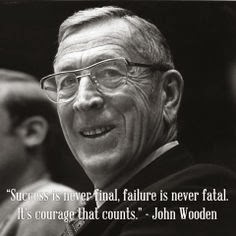
When I heard that sports artist LeRoy Neiman had died at the age of 91, I knew I wanted to write about him — but I was torn.
I didn't know if I should write about him on my sports blog or my arts/entertainment blog.
After all, Neiman produced paintings and prints of musicians and other celebrities, too.

And he did it well.
He brought their personalities to the canvas in colorfully descriptive ways — but he also did that with sports topics.
And, as someone who worked for several years as a sports copy editor, I have an abiding appreciation for the magic that photographers make with the topics they are assigned to cover.
Many of the most exciting, most dramatic photos I have ever seen were of sports events. Neiman simply did with a brush what photographers once did with film.

They used to call the great Secretariat Big Red. Well, I guess I'm using the word they a bit loosely. Secretariat's owner, Penny Chenery Tweedy, called him that — but the rest of the world called him Secretariat.
In his portrait of Secretariat, Neiman emphasized the red in his coloring (which was never that obvious to me when he was running — that may have been the quality of the color in our TV set, but he always looked chestnut brown to me). I guess you could say he exaggerated it, much as a cartoonist would exaggerate an unusual physical characteristic of a human subject.
I first became acquainted with Neiman's work in magazines like Sports Illustrated, which often showcased his paintings of memorable moments, like Dwight Clark's reception in the January 1982 NFC championship game.
Or great Olympic performances. Or golf tournaments.

Mostly, though, I associate Neiman's artwork with Muhammad Ali. Neiman often did a painting following a big fight, and his work was always in great demand whenever Ali fought another big–name boxer, like George Foreman or Joe Frazier.
I kind of got the impression at the time that Ali was one of Neiman's favorite subjects. Perhaps he was. Artists are human, after all, and they certainly have their preferences, just like anyone else.
But I don't know that for certain. If Neiman ever spoke in an interview about preferring to paint Ali more than anyone else, I never read or heard it.
Perhaps William Grimes of the New York Times put it best when he wrote that Neiman "cast himself in the mold of French Impressionists ... chroniclers of public life who found rich social material at racetracks, dance halls and cafes."
Neiman may have been sort of like Red Smith, who once said that he believed that people went to sports events to have fun, then they picked up the newspaper the next day to read about it and have fun all over again.
Perhaps Neiman's way of having fun was to re–create great sports moments on his canvas.
His work is, in its way, iconic — moreso, I think, than Andy Warhol's paintings of Campbell's soup cans because at least it captures the color of life. It isn't merely a painter's version of the negative of a still life.
I will miss Neiman every time a memorable moment occurs in sports.











